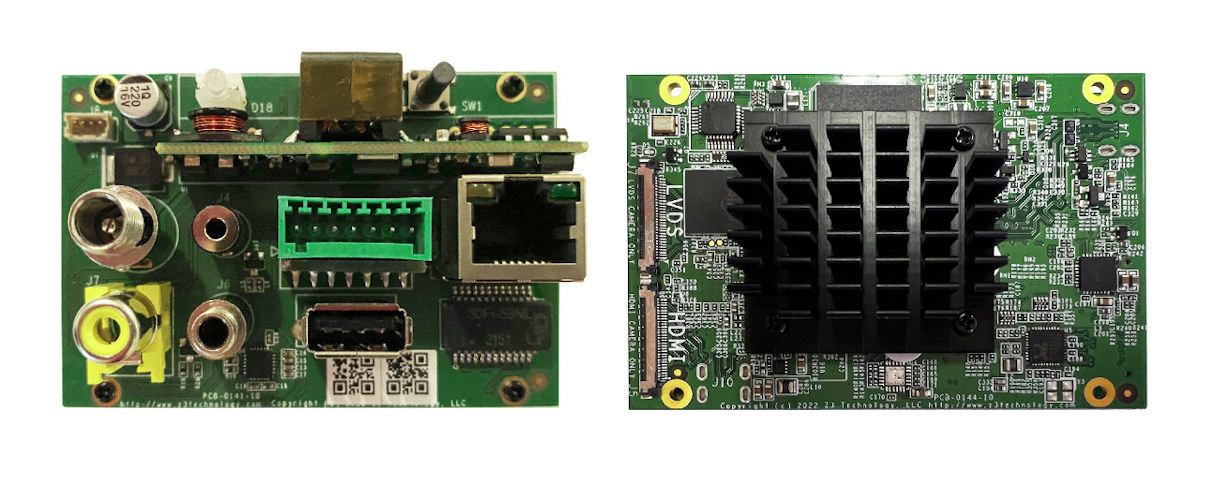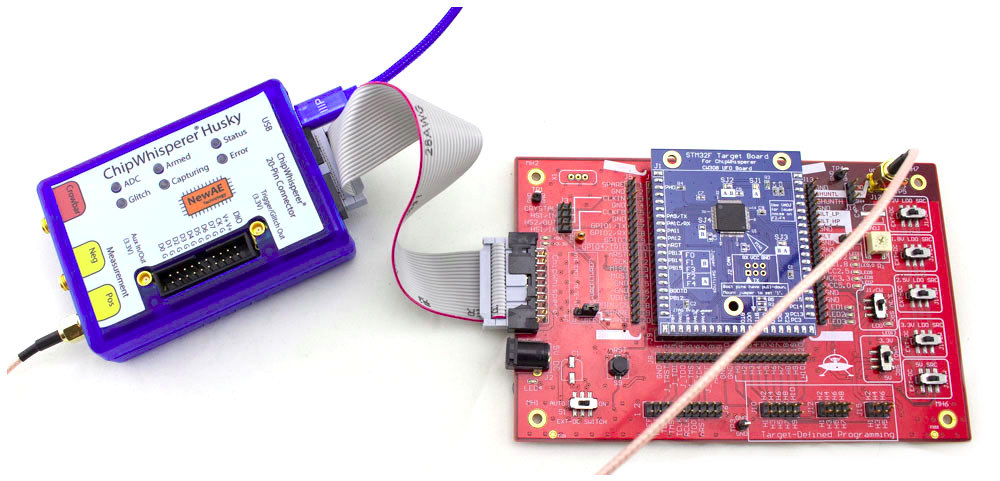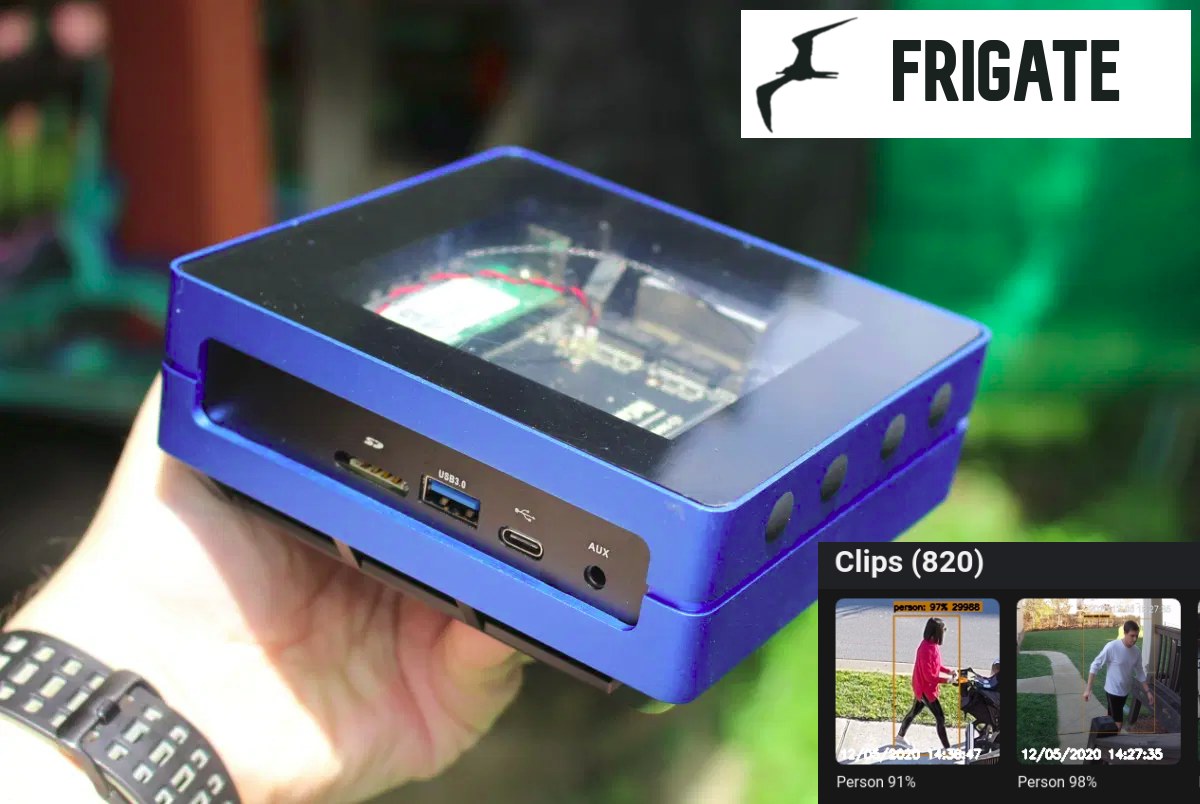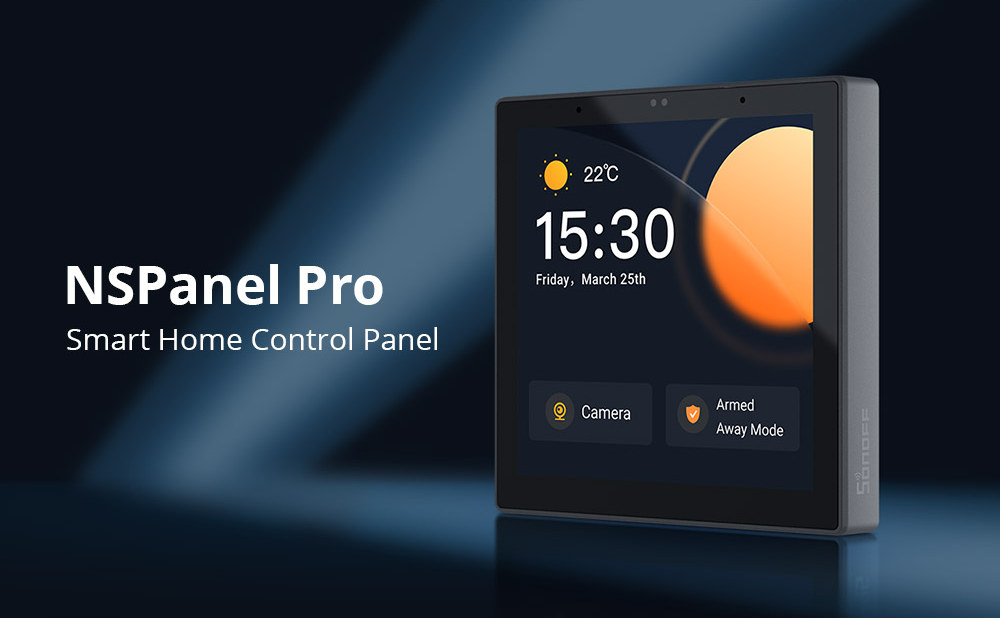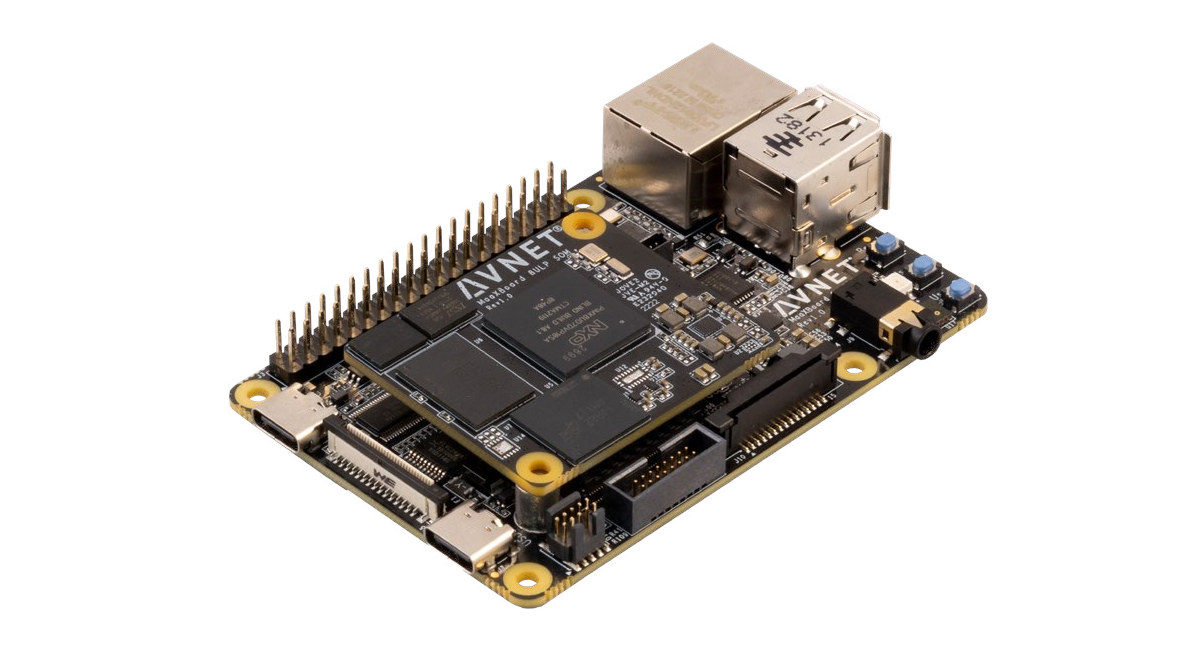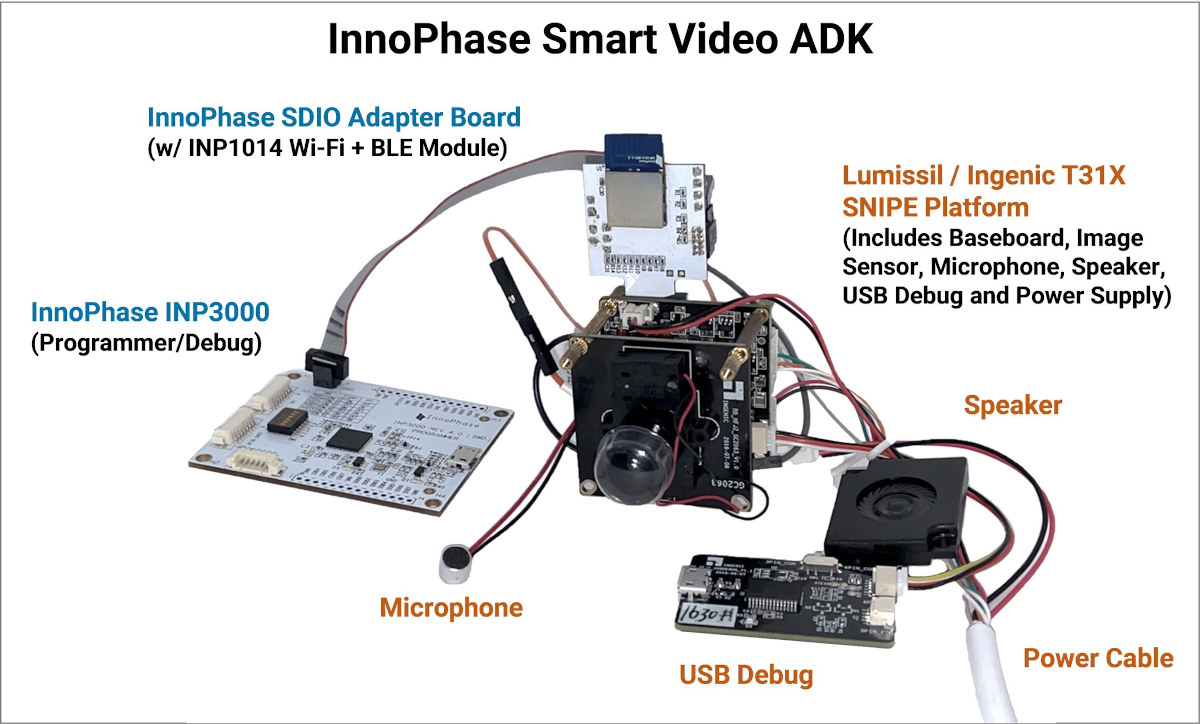Canonical has launched free Ubuntu Pro subscriptions for individuals and small companies for up to five machines, enabling anybody to get longer-term support and features that were only reserved to paying enterprise customers so far. Canonical provides Ubuntu for free with LTS versions released every two years and supported for 5 years. The latest Ubuntu 22.04 LTS was released in April 2022, meaning it will be supported until April 2027. But if you’d like to get 10-year support and extra security features you can now do it for free through an Ubuntu Pro subscription for up to 5 machines. Let’s compare the key differences between Ubuntu LTS and Ubuntu Pro first. You’ll get 10 years of support instead of 5 with Ubuntu Pro and as well as improved security. If you are upgrading to the latest LTS soon after it is out, the 10-year support may not be worth much […]
Miniature dual camera Full HD or 4K encoder boards support RGB and thermal cameras
Z3 Technology has introduced several miniature dual-camera encoder boards with the PoE-capable FV2K-13A and FV4K-13A boards capable of handling two visible and/or thermal cameras at Full HD or 4K resolution respectively, along with the FV2K-15A and FV4K-15A variants equipped with low-profile connectors. All four models enable H.265/H.264 video streaming of a single or dual camera system, support ONVIF Profile S and T profile, and comply with the NDAA law in the US. This set of features as well as low power consumption and the lightweight designs make the boards suitable for UAV, inspection, surveillance, and other weight-constrained applications. Z3 Technology FV2K-13A and FV4K-13A dual-camera encoder boards specifications: SoC – Ambarella CV22 quad-core Cortex-A53 processor with 4Kp60 encoder (see PDF product brief) Storage – MicroSD, USB, or NFS Camera interfaces FV2K-13A Visible Camera Formats – Sony FCB-EV7520(A) and FCB-EV9500L HD and SD IR Formats – RS170, NTSC/PAL, and LVDS FV4K-13A Visible […]
ChipWhisperer-Husky is a palm-sized power analysis and fault injection tool (Crowdfunding)
NewAE Technology’s ChipWhisperer-Husky is a compact tool designed for side-channel power analysis and fault injection with features such as a high-speed logic analyzer used to visualize glitches, real-time data streaming for attacking asymmetric algorithms, and support for JTAG/SWD programming. The security research company explains its device delivers a more stable and reliable experience compared to other off-the-shelf test gear such as oscilloscopes and function generators thanks to features such as synchronous sampling, which means the sample clock of your target device and the sample clock of ChipWhisperer-Husky can be perfectly aligned, or the ability to generate glitches, including clock glitches that can be less than a nanosecond wide. ChipWhisperer-Husky key features and hardware specifications: Synchronous clock for capture board and target board for significantly improved performance over a typical asynchronous oscilloscope setup 12-bit 200MS/s ADC for capturing power traces – It can be clocked at both the same clock […]
SiFive unveils Automotive E6-A, X280-A, and S7-A RISC-V processors
RISC-V is coming to your car too, with the introduction of SiFive Automotive E6-A, X280-A, and S7-A RISC-V processors designed for automotive applications such as infotainment, cockpit, connectivity, ADAS, and electrification. Those are built on the existing SiFive Essential 6-series E6 32-bit real-time cores, SiFive Intelligence X280 64-bit RISC-V processor with AI extensions, and SiFive S7 64-bit real-time cores (equivalent to Cortex-R7/R8), but adds safety, security, and performance required by the automotive market such as ASIL compliance. Each new core targets specific applications within a vehicle: The SiFive E6-A series will be found in system control boards, hardware security modules (HSMs) and safety islands, as well as standalone in microcontrollers. The SiFive S7-A 64-bit real-time core is said to be suited to the needs of SoCs with performant safety islands, requiring both low latency interrupt support and the same 64-bit memory space as the main application CPUs. The SiFive X280-A […]
Odyssey Blue mini PC bundle ships with Frigate open-source NVR, Coral USB AI accelerator
Odyssey Blue mini PC based on the ODYSSEY-X86J4125 SBC is now offered as part of a bundle with Frigate open-source NVR platform with support for real-time local object detection, and an Coral USB AI accelerator. The Odyssey Blue mini PC is equipped with an Intel Celeron J4125 quad-core Gemini Lake Refresh processor, 8GB RAM, and a 128GB SSD preloaded with an unnamed Linux OS (probably Debian 11) and Frigate Docker container. The solution can run over object detection at 100+ FPS when equipped with a Coral USB accelerator. Since the hardware is not exactly new, and we’ve covered it in detail in the past, even reviewing the earlier generation SBC with Celeron J4105 processor and Re_Computer enclosure, I’ll focus on the software, namely Frigate NVR in this post. Frigate is an open-source NVR program designed for Home Assistant with AI-powered object detection that runs as a Docker container and uses […]
SONOFF NSPanel Pro Android control panel doubles as WiFi & Zigbee Smart Home gateway
ITEAD has introduced the SONOFF NSPanel Pro Smart Home control panel running Android 8.1 on a Rockchip PX30 quad-core Cortex-A35 processor and acting as a Smart Home gateway thanks to an 802.15.4 radio for Zigbee 3.0, and 2.4 GHz 802.11b WiFi for connectivity. The NSPanel Pro follows the ESP32-powered SONOFF NSPanel introduced just last year but offers much more flexibility with Android, 2GB RAM, 8GB eMMC flash, and also offers a slightly larger 3.95-inch capacitive touchscreen display with 480×480 resolution. SONOFF NSPanel Pro specifications: SoC – Rockchip PX30 quad-core Cortex-A35 processor with Arm Mali-G31 GPU System Memory – 2GB DDR3 Storage – 8GB eMMC 5.1 flash Display – 3.95-inch capacitive touchscreen color TFT display with 480×480 resolution Audio – 1W speaker, digital microphone for two-way communication (intercom) Connectivity 802.15.4 radio with Zigbee 3.0 support. Matter and BLE Mesh scheduled for 2023 2.4 GHz 802.11b WiFi Sensor – Light sensor for […]
MaaXBoard 8ULP SBC leverages NXP i.MX 8ULP Cortex-A35/M33 SoC for Edge audio and HMI applications
Avnet MaaxBoard 8ULP will be one of the first single board computers (SBC) based on the new NXP i.MX 8ULP Cortex-A35/M33 processor designed for Edge audio and HMI applications, and featuring NXP’s EdgeLock for device-to-cloud security. The board will come with 2GB RAM, 32GB eMMC flash, a MIPI DSI display connector, a MIPI CSI camera connector, Fast Ethernet and WiFi 5 connectivity, a digital microphone, and a 3.5mm stereo audio jack, and provide expansion capabilities via a 40-pin header for Raspberry Pi HATs and a 16-pin Shuttle Click header for MikroE Click add-on boards. MaaXBoard 8ULP SBC specifications: SoC – NXP i.MX 8ULP processor with 2x Arm Cortex-A35 core @ 1.0 GHz, 1x Arm Cortex-M33 real-time core @ 216 MHz, 1x HiFi 4 audio DSP @ 600 MHz, 1x Fusion DSP @ 200 MHz for low-power voice and sensor hub processing, as well as 2D and 3D GPUs and 768 […]
Ingenic T31-based WiFi AI camera development kit promises over a year of battery life
We’ve previously seen WiFi security cameras promising a year of battery life with products like the Eufy EverCam, but the Ingenic T31-based Smart Video Application Development Kit by Innophase may allow for the development of even more power-efficient WiFi AI security cameras with AI processing last can last over one year. The development kit combines Ingenic T31 MIPS & RISC-V camera SoC with Innophase Talaria TWO INP101x ultra-low-power (57µA @ DTIM10) Wi-Fi & BLE wireless module, that is estimated to last 14.4 months on a 3,000 mAh battery while operating at a 99.3% idle, 0.7% video capture ratio. Development kit content: Board with Ingenic T31 MIPS processor @ 1.5 GHz and RISC-V low-power core, H.265 encoder, 512Mbit or 1Gbit on-chip memory fitted with 2M pixel Full-HD camera @ 30fps USB Debug board Microphone and speaker InnoPhase Talaria TWO SDIO Adapter Board Fitted with INP1014 LGA module with 2.4GHz WiFi 4, […]



